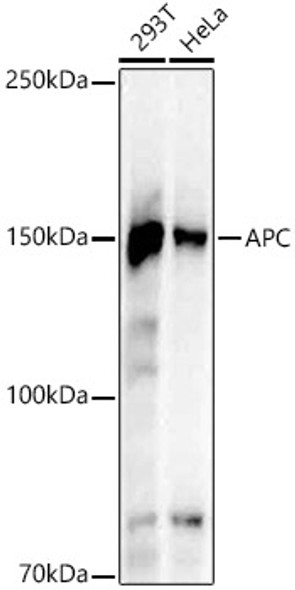Description
system_update_altDatasheet
| Product Name: | CD9 monoclonal antibody (APC ) |
| Product Code: | AGIM0458 |
| Size: | 100 µL |
| Reactivity: | Human |
| Clone: | HI9a |
| Applications: | Flow Cytometry |
| Conjugate: | APC |
| Isotype: | IgG1 |
| Host Species: | Mouse |
| Storage: | Store at 4°C. Avoid prolonged exposure to light. |
| Uniprot: | P21926 |
| Background: | CD9 belongs to proteins of tetraspanin family that orchestrate cholesterol-associated tetraspaninenriched signaling microdomains within the plasma membrane, forming complexes with each other as well as with integrins, membrane-anchored growth factors and other proteins. CD9 is involved in cell motility, osteoclastogenesis, neurite outgrowth, myotube formation, and sperm-egg fusion, plays roles in cell attachment and proliferation and is necessary for association of heterologous MHC II molecules on the dendritic cell plasma membrane which is important for effective T cell stimulation. CD9 is also considered as metastasis suppressor in solid tumors. |
| UniProt Protein Function: | CD9: Involved in platelet activation and aggregation. Regulates paranodal junction formation. Involved in cell adhesion, cell motility and tumor metastasis. Required for sperm-egg fusion. Belongs to the tetraspanin (TM4SF) family. |
| UniProt Protein Details: | Protein type:Cell adhesion; Membrane protein, integral; Membrane protein, multi-pass; Motility/polarity/chemotaxis Chromosomal Location of Human Ortholog: 12p13.31 Cellular Component: extracellular space; focal adhesion; integral to plasma membrane; membrane; plasma membrane; platelet alpha granule membrane Molecular Function:protein binding Biological Process: cell adhesion; cell motility; cell surface receptor linked signal transduction; fusion of sperm to egg plasma membrane; paranodal junction assembly; platelet degranulation; receptor internalization |
| NCBI Summary: | This gene encodes a member of the transmembrane 4 superfamily, also known as the tetraspanin family. Tetraspanins are cell surface glycoproteins with four transmembrane domains that form multimeric complexes with other cell surface proteins. The encoded protein functions in many cellular processes including differentiation, adhesion, and signal transduction, and expression of this gene plays a critical role in the suppression of cancer cell motility and metastasis. [provided by RefSeq, Jan 2011] |
| UniProt Code: | P21926 |
| NCBI GenInfo Identifier: | 231724 |
| NCBI Gene ID: | 928 |
| NCBI Accession: | P21926.4 |
| UniProt Secondary Accession: | P21926,Q5J7W6, Q96ES4, D3DUQ9, |
| UniProt Related Accession: | P21926 |
| Molecular Weight: | |
| NCBI Full Name: | CD9 antigen |
| NCBI Synonym Full Names: | CD9 molecule |
| NCBI Official Symbol: | CD9 |
| NCBI Official Synonym Symbols: | MIC3; MRP-1; BTCC-1; DRAP-27; TSPAN29; TSPAN-29 |
| NCBI Protein Information: | CD9 antigen |
| UniProt Protein Name: | CD9 antigen |
| UniProt Synonym Protein Names: | 5H9 antigen; Cell growth-inhibiting gene 2 protein; Leukocyte antigen MIC3; Motility-related protein; MRP-1; Tetraspanin-29; Tspan-29; p24; CD_antigen: CD9 |
| Protein Family: | CD9 antigen |
| UniProt Gene Name: | CD9 |


 Human CD9 Monoclonal Antibody (APC Conjugated) [HI9a](AGEL1130)](https://cdn11.bigcommerce.com/s-rd6ounxcu2/images/stencil/590x590/products/12204/16257/human-cd9-monoclonal-antibody-apc-conjugated-hi9aagel1130__63874__11195.1706269851.jpg?c=1)



